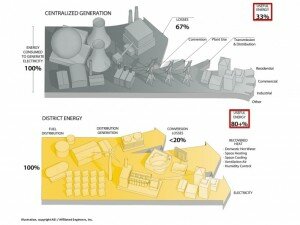By Jonathan Morier, TAF’s Indoor Environmental Quality Researcher
 Earlier this month I attended the Green Building Festival put on by Sustainable Buildings Canada. It was a day packed with interesting presentations and discussions on the topic of urban resilience. While the day started with a reminder from Ontario Environment Commissioner Gordon Miller of the “doom and gloom” that awaits us if we don’t act soon on climate change, few of the subsequent presentations provided a focus on greenhouse gas reduction, or the fact that there is a lot of crossover between greenhouse gas reduction and resilience.
Earlier this month I attended the Green Building Festival put on by Sustainable Buildings Canada. It was a day packed with interesting presentations and discussions on the topic of urban resilience. While the day started with a reminder from Ontario Environment Commissioner Gordon Miller of the “doom and gloom” that awaits us if we don’t act soon on climate change, few of the subsequent presentations provided a focus on greenhouse gas reduction, or the fact that there is a lot of crossover between greenhouse gas reduction and resilience.
For example, Robert Thornton, President & CEO of the International District Energy Association gave a passionate presentation about district energy and how it can increase energy efficiency and resilience, noting that Princeton University was minimally affected by Hurricane Sandy while millions of people around the university lost power for days. The university campus was able to maintain power thanks to its microgrid and cogeneration plant, and even became a hub for police, firefighters, and other emergency workers of the area to regroup, warm up, and recharge their equipment.
District energy networks such as Princeton’s not only increase resilience in times of crisis, but also reduce emissions due to their high energy efficiency capabilities. Robert explained that in a typical fossil fuelled power plant, two-thirds of the energy is wasted due to heat loss (see diagram, above). On the other hand, district energy power plants generally achieve 70-80% burning efficiency by capturing waste heat to warm streets and buildings. One Copenhagen district power plant was even able to achieve close to 90% burning efficiency.
In the afternoon session, Paul Dowsett, Principal Architect, SUSTAINABLE.TO, presented his award-winning designs for resilient houses that can withstand severe hurricanes such as Katrina or Sandy. The designs are elevated to adjust for floodplain but they also embrace passive design principles. They are highly insulated, oriented for optimal sunlight exposure, and have passive shading elements to reduce heat during summer months, making them a great choice both for resilience and energy efficiency.
At TAF, we work on making buildings more energy efficient and you can learn more about our program by visiting out TowerWise website. We are also very interested in your ideas about integrating strategies to reducing greenhouse gas emissions and build up our resilience to climate change.







